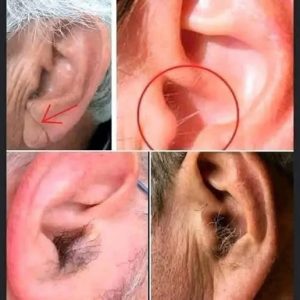Ear hair growth, while sometimes embarrassing, is a natural part of aging influenced by hormones, genetics, and age. “Everyone has some degree of ear hair,” but it becomes more visible in men as hormone levels shift with age.
Androgens like testosterone are the main cause, making hair follicles more sensitive and resulting in thicker hair on the ears, nose, and eyebrows. This process is “part of the normal aging process and not necessarily a cause for concern.”
Hair inside the ear helps trap dust and prevent infections, but dense growth on the outer ear can sometimes signal a hormonal imbalance or other issues.
Genetics also play a strong role — “if ear hair runs in the family, it’s likely to appear in later years.” Some rare cases may involve hypertrichosis, a condition causing excessive hair growth possibly linked to hormonal disorders or medications.
Although a few studies have suggested a connection between ear hair and heart disease, the evidence is limited. Generally, ear hair is harmless, but “a sudden increase or change in growth patterns could warrant a medical check-up.” Regular trimming or grooming keeps it under control and maintains comfort and hygiene.



